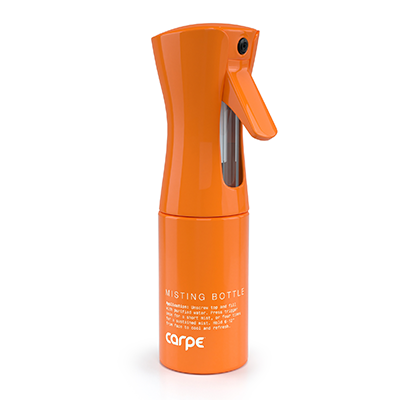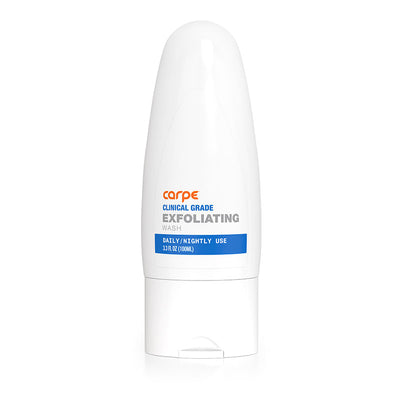What Causes Underarm Sweat (Axillary Hyperhidrosis)
Are you curious about why your underarms are always sweaty? It’s a pretty common problem, but most people don’t know the reason for it. Excessive underarm sweat is due to a condition called axillary (aka armpit) hyperhidrosis. This is a form of primary focal hyperhidrosis - a condition that causes people to produce excessive sweat on specific parts of the body. The excessive sweating from axillary hyperhidrosis is believed to be caused by a combination of genetics and other factors. Hyperhidrosis is thought to cause overactive sweat glands in the underarm areas to produce more sweat than is necessary to regulate body temperature. For people with axillary hyperhidrosis, the overactivity of their sweat glands can be an uncomfortable and embarrassing problem. Fortunately, there are several specific solutions and treatments you can use to learn how to stop your underarm sweat.[1]
Why Standard Antiperspirants may Not Help Underarm Sweat
Regular antiperspirants are designed to reduce the amount of sweat an average person produces due to environmental conditions, like heat. However, a person with hyperhidrosis sweats significantly more than a person without hyperhidrosis (often regardless of the presence of heat), so people with the condition often need specialized antiperspirants. If you think you might have this hyperhidrosis, it will help to learn everything you need to know about hyperhidrosis.[1]
How to Stop Underarm Sweat
Unsure of how to stop underarm sweat? There are several very effective methods you can use to control your sweat!
Over-The-Counter vs. Prescription Strength Antiperspirants
Many people with hyperhidrosis wonder if they should use antiperspirant or deodorant, or both. The answer is "yes". A good first step to combat axillary hyperhidrosis (underarm sweat) is to apply a stronger antiperspirant specifically tailored to manage hyperhidrosis. It is necessary to understand what antiperspirant does and that it is different from deodorant in order to see why antiperspirant is so important for those with hyperhidrosis.
Antiperspirant reduces the amount of sweat a person produces by blocking sweat glands, while deodorant merely masks the smell of body odor. There are two categories of antiperspirants that can help with excessive underarm sweat: over-the-counter antiperspirants and prescription strength antiperspirants. The biggest difference between the two groups of antiperspirants is the percentage of the active aluminum compounds that work to reduce sweat. Currently, almost all antiperspirants utilize one of these many aluminum compounds to keep the pores from producing sweat. In most cases, an antiperspirant with more than 20-25% aluminum requires a prescription to purchase.[1]
It can be confusing when attempting to choose the right over-the-counter antiperspirant, but understanding the type of active ingredient and its strength for each product can make the process easier. Certain deodorants are better for hyperhidrosis then others and many people benefit from using antiperspirant deodorants, which combine the properties of each product.
Many people begin treating their hyperhidrosis with an over-the-counter topical solution, then seek a prescription from a dermatologist if that method does not reduce their underarm sweat. To help you decide which antiperspirant is going to be most effective we recommend managing your hyperhidrosis with a doctor.[1]
Botox
When antiperspirant alone is not enough to curb underarm sweat, botox injections can be a helpful treatment. Botox for axillary hyperhidrosis is an effective treatment for axillary hyperhidrosis that was approved by the FDA in 2004.
Although it is typically associated with cosmetic surgeries, botox is a compound with an impressive ability to reduce underarm sweat. When botulinum toxin (Botox) is injected into the dermis of the underarms, the neurotransmitters that control the reception and execution of neural messages are essentially paralyzed. Botox is widely used for a myriad of treatments and surgeries, but it is important to realize that botox is actually a very strong toxin that can easily paralyze human cells. For this reason, it is important to make sure that you get botox treatments from an experienced doctor. Repeat Botox injections are needed every 6 or 12 months to maintain results. Botox can also be used as a treatment for palmar and plantar hyperhidrosis.[1]
Electromagnetic Energy (MiraDry)
One of the newest technologies to emerge in the fight against excessive underarm sweat are electromagnetic energy treatments like MiraDry. These treatments utilize electromagnetic energy to eliminate sweat glands in the underarms. They are one of the local permanent treatment options for axillary hyperhidrosis, meaning that results should last forever. The treatment works by cooling the epidermis (the first and most exterior layer of the skin) while using the electromagnetic energy to heat and destroy the sweat glands found in the dermis (the second layer of skin). Electromagnetic treatments are emerging as one of the more effective treatments for individuals with axillary hyperhidrosis. Most people undergo either two to three treatment sessions over the course of a year in order for the electromagnetic treatments to be most efficacious. As this technology was developed within the last decade, the long-term results are still unknown. However, all current tests, studies, and uses have shown that electromagnetic energy treatments appear to be a legitimate and safe operation.[2]
Other Treatments
If one type of treatment is not entirely effective, it can be combined with other treatments to make it more effective. In some cases, doctors may prescribe oral medications for hyperhidrosis alongside one of the more targeted treatments.[1]
It may also be helpful to look into new products that have come out recently, like Qbrexza, made by the company Dermira. Qbrexza is a medicated wipe that can be used to prevent sweat production on certain areas of the body. It is known to be especially effective for treating underarm sweat.[3] Future treatments and research are actively being developed, and hopefully, in the next several years there will be even more comprehensive treatment options for people who have hyperhidrosis.
Other Considerations
Oftentimes, people with axillary hyperhidrosis struggle with armpit stains, which can be hard to get rid of. There are some effective ways to remove armpit stains that can keep clothes from being destroyed. If you prefer to use synthetic fabrics, there are specific ways to get pit stains out of polyester. It can also be difficult to remove antiperspirant from skin if you don't know how, but by using a paste in the shower which can be easily washed off, it is simple to do.
Excessive underarm sweat is highly treatable; in fact, it’s one of the easiest types of hyperhidrosis to get under control! So, don’t give up, explore your options, and you will see results.
Sources
- Pariser, D. M. (2014). Hyperhidrosis (4th ed., Vol. 32). Amsterdam: Elsevier Pub. Co., 2014. Retrieved from https://www.elsevier.com/books/hyperhidrosis-an-issue-of-dermatologic-clinics/pariser/978-0-323-32607-0
- MiraMar Labs, O'Shaughnessy, K., & Melkerson, M. (2011). 510(k) Summary. Division of Surgical, Orthopedic And Restorative Devices. Retrieved May 23, 2018, from https://www.accessdata.fda.gov/cdrh_docs/pdf10/K103014.pdf.
- Qbrexza. (2018). Retrieved May 13, 2020, from https://dermira.com/our-medicines/





16790753702383.jpg?v=1679075372)

16790746985853.jpg?v=1679074700)


16790757289763.jpg?v=1679075731)









